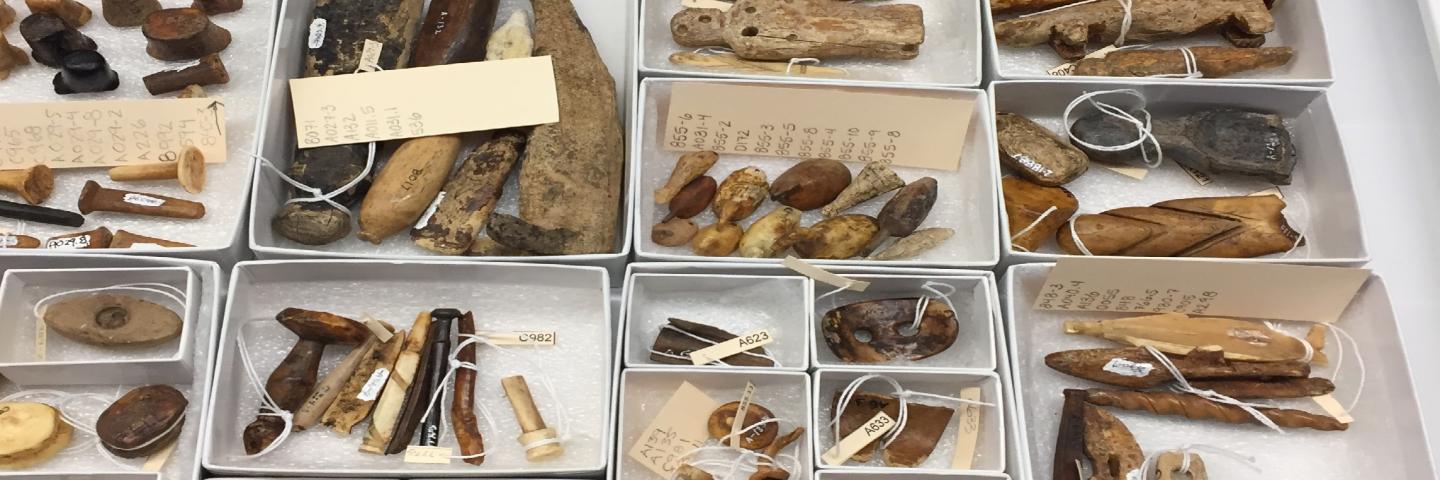As the official repository for anthropological and paleontological collections in Oregon, museum staff serve as stewards of our shared heritage, caring in perpetuity for every object in our collections.
As an institution accredited by the American Alliance of Museums, we follow the highest professional standards for collections preservation and access, as detailed in Collections Management Policy.
Preventative care means mitigating deterioration of and damage to objects. Museum staff members achieve this through careful handling, maintenance, and storage—maintaining appropriate environmental conditions in storage areas and exhibit spaces. Preventative care also involves integrated pest management, emergency preparedness, and photography of original material to reduce handling requirements.
We are accountable for not only the objects in our care, but for information about these collections—including scientific data and reports; cultural context such as artist or maker name, tradition, and heritage; the sources of material; and print and digital images. Information from these associated archives is accessed and managed using catalog databases and image libraries, a significant portion of which is now available online. Collections are tracked through our museum registration systems, accounting for the scientific or cultural data, condition, location, and access history of objects.
The Native American Graves Protection and Repatriation Act (NAGPRA) was passed in 1990 and established protocols for the transfer of human remains and funerary objects to culturally affiliated tribes. Since passage of NAGPRA, the museum has actively inventoried and reported its holdings and consulted and collaborated with affiliated Tribes in compliance with the law. Read more about the museum and NAGPRA.



